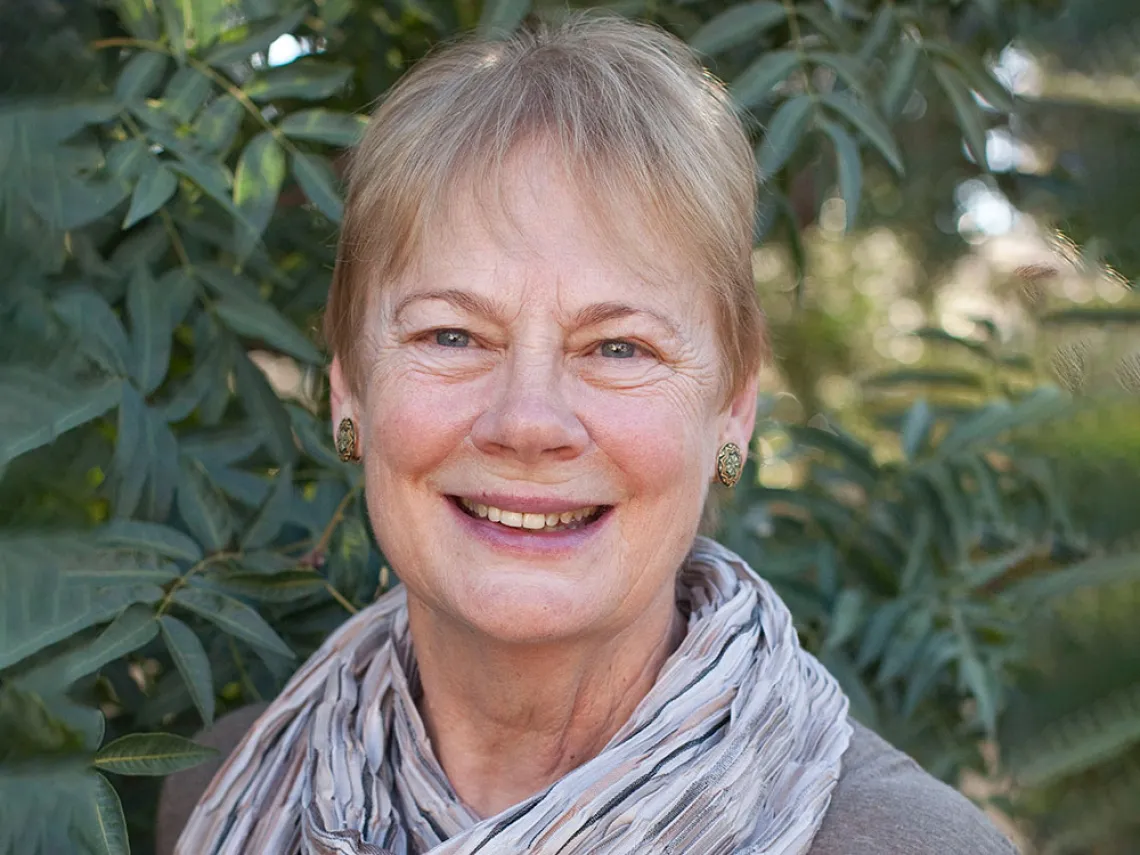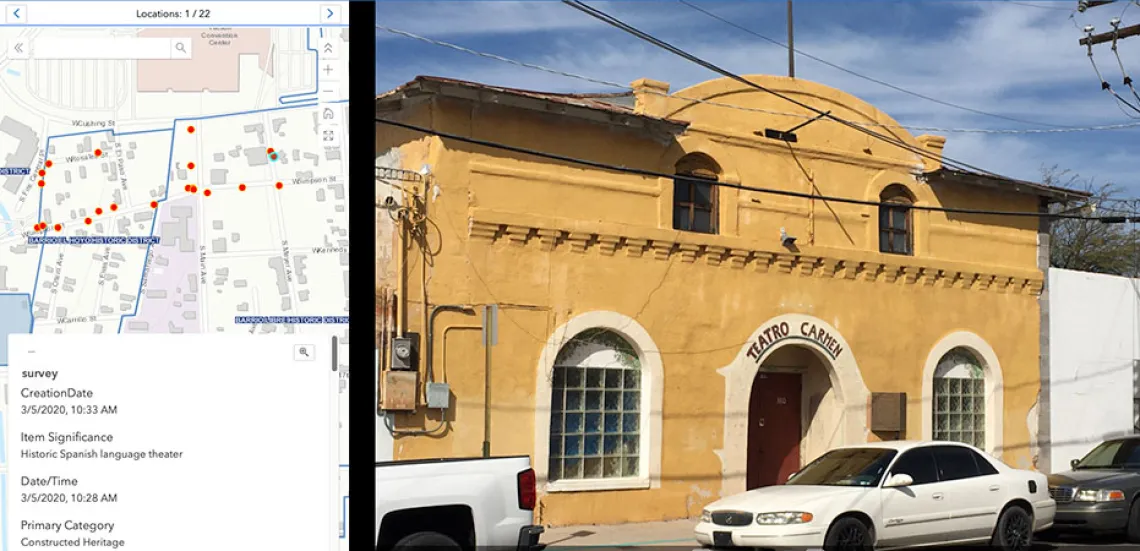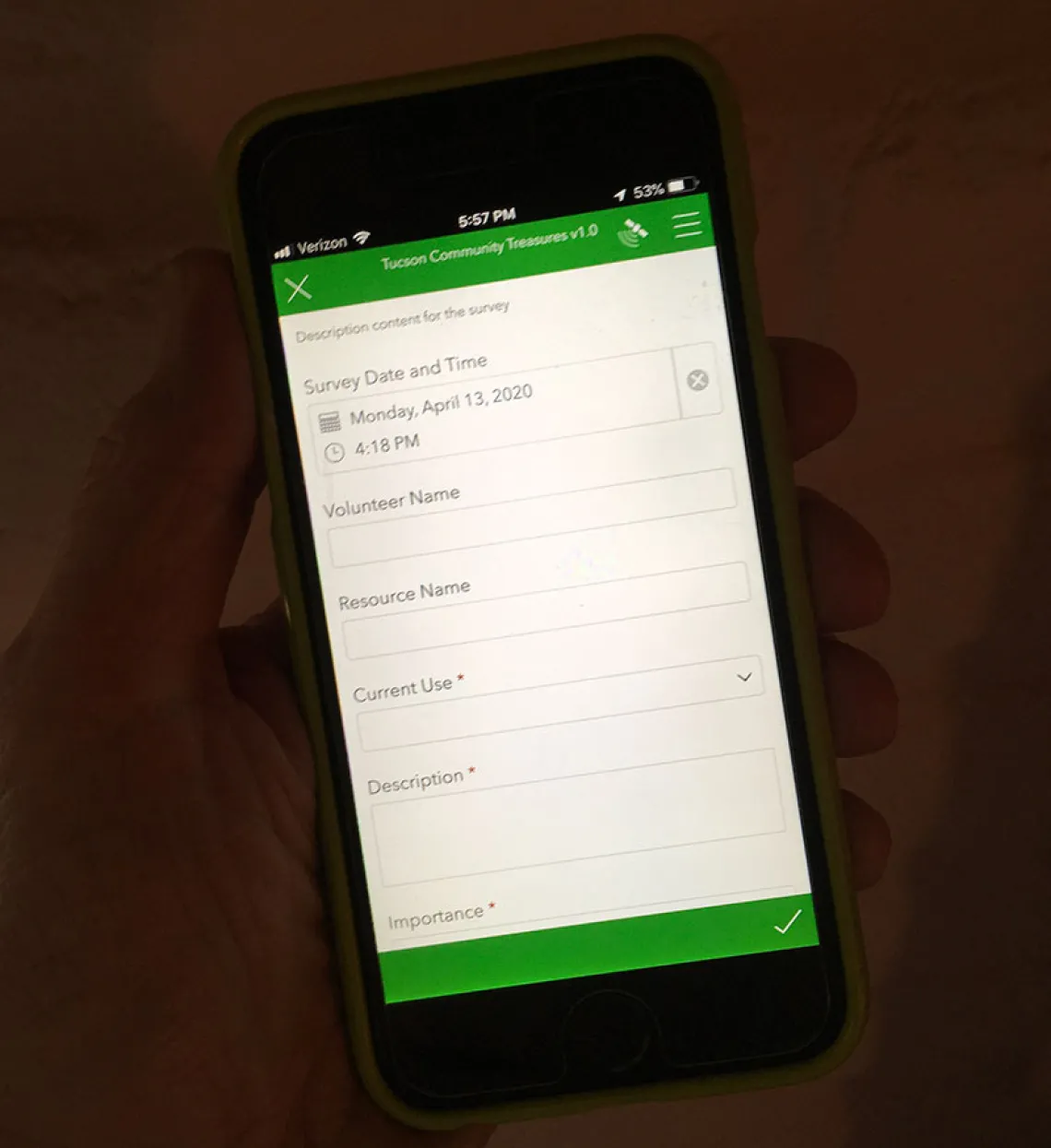CAPLA Heritage Conservation Project Director Guides Urban Planning Graduates and Neighbors in Creating a Cultural Asset App for Tucson

Helen Erickson, Heritage Conservation Program Project Director.
“We know what’s special about Tucson when we encounter it,” says Helen Erickson ’12 MLA, project director for the College of Architecture, Planning and Landscape Architecture’s Heritage Conservation Program, “but it’s much more difficult to protect what we value most about the community in the face of growth and change.”
Preserving the historic, multicultural richness of the Old Pueblo, as Tucson is nostalgically called, is not easy: “Identifying culturally important spaces and places really isn’t something that can be done by outside experts. It is best done by those who experience the city as part of daily life.”
That’s why, each year, she brings together graduate students in her preservation planning course with neighborhood residents on a project “designed to benefit the community by providing planning for the maintenance of important local historic resources.”
This year the class is taking advantage of geographical information system (GIS) technology to document aspects of Tucson’s heritage that might be passed over by other types of surveys.

Example of collected data on the Tucson Community Treasures app.
With the help of a GIS professional, students and neighborhood residents are collaborating in the development and employment of a mobile app that will allow smartphone or tablet users to map the location of important places in their own neighborhoods. By doing so, says Erickson, “cherished but intangible aspects of Tucson’s heritage will made visible to policy makers and planners—a first step towards their protection.”
A grant from the Southwestern Foundation for Education and Historical Preservation made it possible to bring outside lecturers with expertise in this area to share their knowledge with students and neighborhood volunteers. The grant also provides funding for three graduate students to synthesize and analyze the collected data during the summer of 2020, making it accessible to neighborhoods, city planners and Tucson ward offices.
The Tucson Community Treasures app, which was featured in a March 9, 2020 story by Tucson ABC affiliate KGUN 9 News, is now in the hands of community volunteers, who are in the process of documenting special places in their own neighborhoods. UArizona students are standing by to provide technical assistance by Zoom and by phone.

Tucson Community Treasures app.
Erickson, who holds a Master of Landscape Architecture and Certificate in Heritage Conservation from CAPLA, joined the college faculty in 2017. For seven years before that she lent her expertise to the Drachman Institute on Cooperative Ecosystem Studies Unit-related projects, including landscape documentation and analysis at the Faraway Ranch Historic District in Chiricahua National Monument, architectural assessment at Organ Pipe Cactus National Monument and cultural landscape planning at Valles Caldera National Preserve in New Mexico. She is also the national ASLA coordinator for the Historic American Landscapes Survey. She holds a BA from Harvard University and a Master of Music from the Yale University School of Music.



